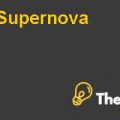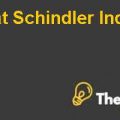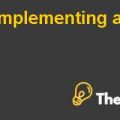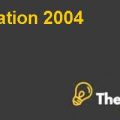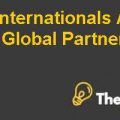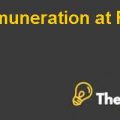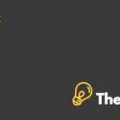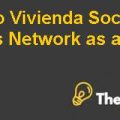
Introduction
Metal giesserei is a famous company for producing the precision metals. The metal produced by the company is of high quality and is used in the automotive aerospace and construction equipment. The production of high quality metals helped the company to win coveted quality award from BMW and many other multinational and famous automobile companies which enhanced the reputation of the company. Its quality focusing techniques help to decrease in the rejection rate from the customers to 70 parts per million. The company registered on the stock exchange in the year 1991 and the 55% shares among the outstanding shares of the company are expected to be held by the family of Mayer.
Problem Identification
The managing director of the company is considering an expansion policy and wants to replace the existing machine with the automated machine,which has greater capacity than the existing machine and it is also expected that it will also reduces the defects per million and will also improve the quality of the parts. The same kind of expansion products have already been rejected by the board of directors due to the economic recession. The managing director of the company is considering that whether the expansion project is financially viable for the company or not.
Calculation of the WACC
The WACC of the company is calculated in two ways. First, it is calculated by using the rate of return that the Mayer family is expected to be earn on the shares that they have and it is expected to be 18% for several years. The capital structure of the company comprises upon both debt and equity.
It is expected that the value of the debt is 33% and the cost of the debt is 6.8%. The value of the equity is 67% and the expected rate of return by the major share holders is 18%. Therefore, by incorporating these values into the formula of the WACC, the cost of capital of the company is calculated which is 13.34%. It means that this rate is used by the management for several years in order to calculate the cost of capital of the company.
CAPM
The cost of capital of the company is also calculated by using the capital asset pricing model. The company is present in Europe, and the rate of return on European bonds suggested by the European government is 5.3%.Itis expected that the market risk premium will be 6% which is assumed by the managing director of the company.
The Beta of the company is 1.25. Moreover, the calculation of WACC through capital asset pricing model is done by identifying the cost of equity first. By incorporating the European bond rate as a risk free rate, the beta of the company and market risk premium into the formula of CAPM, the cost of equity is calculated which is 12.8%. The cost of equity calculated through CAPM is more realistic than Mayer family’s required rate of return on equity. There is a difference of approximately 5% in the cost of equity calculated by the CAPM than the required rate of return of the Mayer family.
The cost of capital is then calculated by using the cost of equity of 12.8%. The other values like cost of debt, value of debt and the value of the equity remain same by assuming that there is no change in capital structure and the debt is available on the same rate as it was available earlier. The cost calculated by using these values is 9.86% which is approximately 3.5% less than the earlier cost of capital. The greater value of the cost of capital mostly results in the rejection of the most positive NPVs projects, which could add value in the wealth of the company and of shareholders if the lower cost of capital is used.Metallgiesseri Worms AG Case Solution
NPV of existing Machinery
The existing machinery is expected to be labor intensive and it is semi automated. The cost of the existing machine is expected to be 415807 Euros. The useful of the machine is 8 years but for the fair comparison, the depreciation of the machinery is calculated upon six years on straight line basis. The depreciation charge for the last two years is zero.
The depreciation is firstly deducted from the revenues as an expense, then added back to calculate the NPV on free cash flows. The existing machinery is labor intensive, therefore it is expected that 24 people are required in order to operate the machinery. The labor cost of each labor person is 7.33 euro per hour and it is expected that each person will work for 8 hours in a day.......................
This is just a sample partial case solution. Please place the order on the website to order your own originally done case solution.

